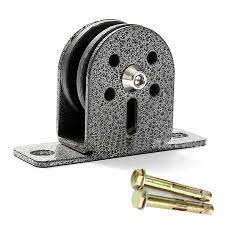Rope Sheave for Galactic Astronomy
In this blog, we will discuss rope sheave for Galactic Astronomy, which is an essential component in various astronomical applications. We’ll cover all aspects of rope sheaves, including their advantages, differences from pulleys, and how to choose the right rope sheave for your specific needs.
What Is a Rope Sheave?
A rope sheave is a grooved wheel that is used to guide a rope or cable. It is also known as a pulley or a block, and it is commonly used in a variety of applications, including elevators, cranes, and various astronomical instruments. A rope sheave consists of a central hub and a grooved outer ring that guides the rope. Rope sheaves can be made from various materials such as metal, plastic, or wood.

Advantages of Rope Sheave
- Rope sheaves reduce friction, making it easier to move heavy objects.
- They can be used to change the direction of the force applied to a rope or cable.
- Rope sheaves are cost-effective and easy to install.
- They can handle high loads, making them ideal for heavy-duty applications.
- Rope sheaves can increase the lifespan of the rope or cable by reducing wear and tear.

Difference Between a Pulley and a Sheave
Although the terms “pulley” and “sheave” are often used interchangeably, there is a difference between the two. A pulley is a simple machine that consists of a wheel with a groove, while a sheave is a pulley with a grooved rim that is designed to guide a rope or cable.
How to Choose or Customize the Right Rope Sheave?
When choosing or customizing a rope sheave, several factors need to be considered to ensure optimal performance.
- Load Capacity: The rope sheave should be able to handle the weight of the load it will be moving.
- Material: The material used to make the rope sheave should be strong, durable, and resistant to wear and tear.
- Groove Size: The groove size of the rope sheave should match the diameter of the rope or cable it will be guiding.
- Bearing Type: The bearing type used in the rope sheave should be appropriate for the application and environment.
- Design: The design of the rope sheave should be optimized for the application to ensure maximum efficiency and performance.

Why Choose HZPT for Your Rope Sheave Needs?
HZPT is a leading manufacturer and supplier of high-quality rope sheaves for a wide range of applications, including Galactic Astronomy. Our products are designed and manufactured to the highest standards, ensuring optimal performance and durability. Here are some of the reasons why you should choose HZPT for your rope sheave needs:
- Wide Range of Products: We offer a variety of rope sheaves in different sizes and designs to meet your specific requirements.
- High-Quality Materials: Our rope sheaves are made from high-quality materials that are strong, durable, and resistant to wear and tear.
- Competitive Pricing: We offer our products at competitive prices without compromising on quality.
- Customization Options: We can customize our rope sheaves to meet your unique requirements.
- Excellent Customer Service: We provide excellent customer service and support to ensure complete satisfaction.

At HZPT, we are committed to providing our customers with high-quality products and exceptional service. Contact us today to learn more about our rope sheaves and how we can meet your specific needs.








